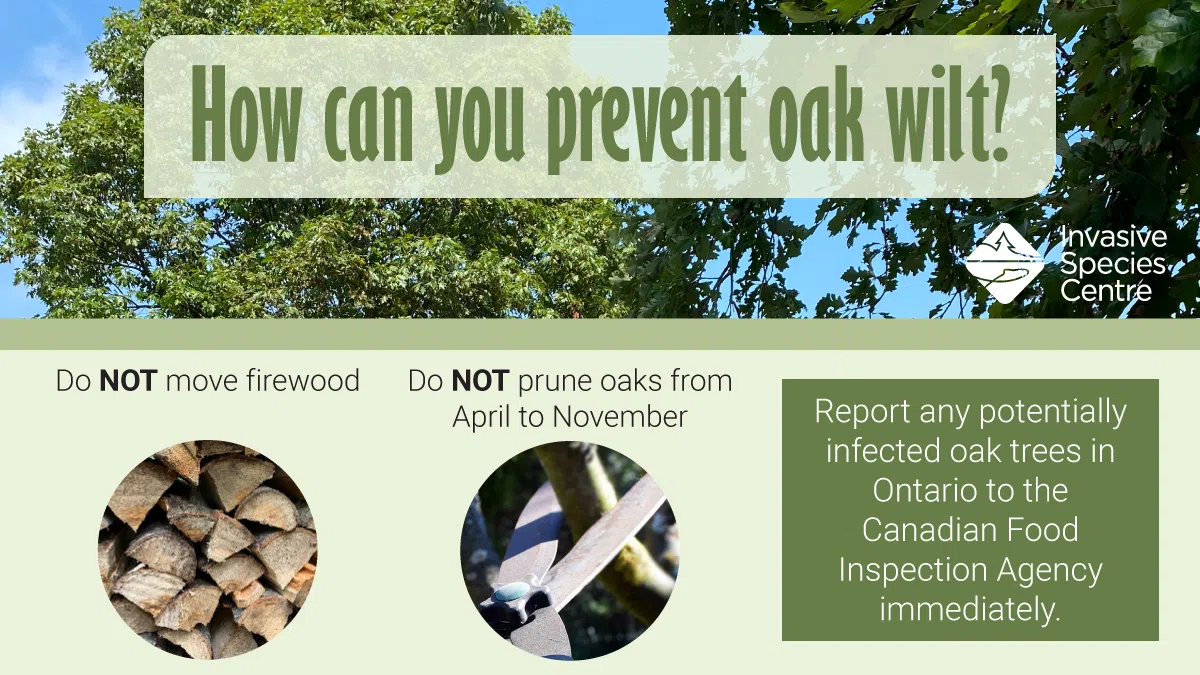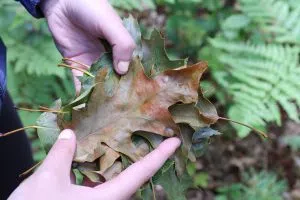
Ontario residents are being urged to avoid pruning oak trees during the no-pruning season, which runs from now until November. Pruning or damaging oak trees during this period makes them more susceptible to oak wilt disease, an invasive condition caused by the fungus Bretziella fagacearum.
Oak wilt disrupts the movement of water and nutrients through oak trees, causing their leaves to wilt, turn brown, and fall prematurely. Over time, the tree may lose all of its leaves. While all oak trees are at risk, red oaks are especially vulnerable, often dying within 2 to 6 weeks after infection. Oak trees are an important part of Ontario’s environment, economy, and communities. They enhance property values, reduce energy costs, help prevent soil erosion, and provide critical habitat for wildlife.
Oak wilt was first detected in Canada in 2023 in Niagara Falls, with subsequent reports from Niagara-on-the-Lake and Springwater, Ontario. The disease has also been found in 24 U.S. states, including Michigan, Ohio, Pennsylvania, and New York.
Colin Cassin, Executive Director of the Invasive Species Centre, emphasizes the importance of preventing oak wilt: “The loss of oak trees impacts both urban and natural spaces. To help stop its spread, we urge people not to prune oak trees until November, when the sap beetles that spread oak wilt are less active. Fresh wounds attract these beetles, increasing the risk of infection.”
If pruning must occur during the high-risk period, or if a tree is injured, it is important to immediately apply a thin layer of wound paint or shellac to the wound.
How to Protect Oak Trees
In addition to refraining from pruning oak trees from April to November, residents can protect their trees by not transporting firewood and by monitoring the health of local oaks. If any signs of oak wilt are observed, it’s crucial to report them to the Canadian Food Inspection Agency (CFIA).
Signs of Oak Wilt:
-
Wilting and bronzing of leaves, starting from the top of the tree and moving down
-
Discolouration of the leaves, beginning at the edges and progressing toward the center
-
Premature leaf fall
-
White, grey, or black fungal mats (also known as “pressure pads”) under the bark, which may emit a fruity smell
-
Vertical cracks in the bark of the trunk or large branches, caused by fungal spore mats pushing against the bark
For an effective report, include the location of the affected tree and photos of the symptoms. The CFIA will investigate reports of oak wilt and take necessary actions, such as site surveys and sample collection.
By following these guidelines and being vigilant, Ontario residents can help protect the province’s oak trees and prevent the spread of this harmful disease.
(Written by: Emma Butler)